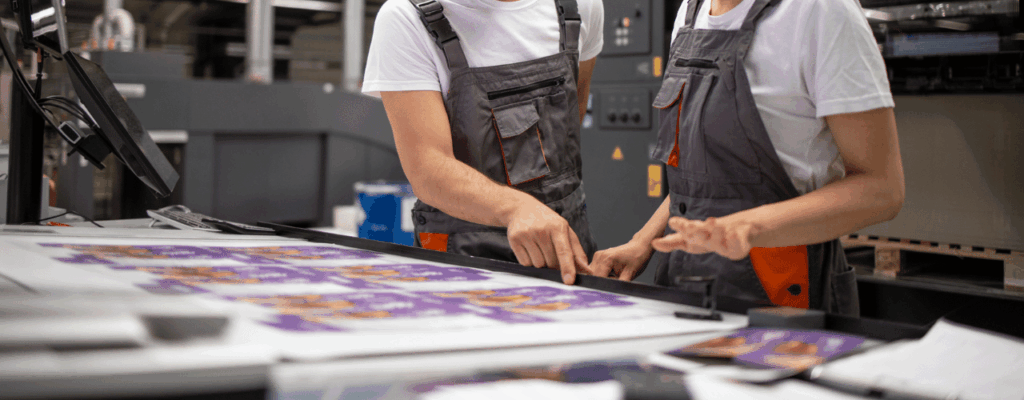

Keeping letterpress plates clean is part of print quality control. A quick, careful routine prevents edge lift, keeps fine detail crisp, and saves time when you set up again. Below is a simple approach for photopolymer plates that shows how to remove ink gently with an appropriate wash while protecting the adhesive edges, finishing with a light polish. It also addresses the practical studio questions about cleaning routines and storage for repeat jobs. The aim is consistent impressions and longer plate life with the least effort.
After a satisfying print session, it’s important to give your letterpress plates a good clean so they’ll be ready for your next project and last as long as possible. It’s a straightforward process, and with a gentle touch, you’ll keep them in great shape.
1) The Gentle Ink Wipe
Once you’re done printing, grab a soft rag. An old, soft T‑shirt or a dedicated printing cloth works well. Your goal here is to remove the majority of the ink. For letterpress plates, this means lifting the surface film without rubbing the relief. You should find that most of the ink lifts off easily with a light wipe. Remember, with letterpress, you’re often using just a thin layer of ink on the plate’s surface, so there’s no need to scrub.
2) Wiping Away the Rest
For any remaining ink, use a mild, water‑miscible solvent. On letterpress plates, a light, controlled application prevents swelling and protects edges. If you’re unsure which one to choose, your friendly neighbourhood pressroom supplier (like https://press-pal.co.uk/) can offer advice. It’s important to avoid harsh, alcohol‑based solvents, as these can dry out the polymer over time and lead to cracking.
Important Note: When using solvents, be mindful to keep them away from the edges of your plates. This prevents the solvent from reaching the adhesive that holds the plate together. Use solvents sparingly — a little goes a long way! And just a heads‑up, “water‑miscible” doesn’t mean you should wash your plates with plain water. Water can soften and weaken the plates, causing them to chip or crumble down the road.
3) The Final Polish
Give your plates one last wipe with a clean, dry rag. Again, the key is gentleness! While the photopolymer material is resilient, it is always best practice to treat plates with care, as you would any delicate typographic surface. Because you’re likely not using a heavy ink load, you’ll find that a firm, but light wipe is all it takes to remove any residual ink.
Frequently Asked Questions
How soon should I clean plates after printing?
Clean as part of your shut‑down routine while ink is still soft. Fresh ink lifts cleanly, so you avoid abrasion and repeated wiping that can mark the surface.
What kind of solvent is safe for photopolymer plates?
Use a mild, water‑miscible press wash recommended for letterpress. It should loosen the ink film without drying the polymer. Avoid strong alcohols or aggressive cleaners that can harden or crack the material over time.
If a wash is water‑miscible, can I rinse plates under a tap?
No. Water can soften the plate and can creep under edges. Apply the wash to a cloth in small amounts and wipe the surface only. Keep liquids away from the edges and the adhesive layer.
How much pressure should I use when wiping?
Aim for firm contact without scrubbing. Let the solvent do the work. Heavy pressure can round edges and polish detail that should remain sharp.
What cloth works best?
Soft, lint‑free cotton is reliable. For letterpress plates, a smooth cotton knit reduces snagging on fine detail. An old T‑shirt, well‑washed towel, or purpose‑made press wipes are all suitable. Avoid paper towels that shed fibres.
How do I prevent solvent from reaching the edges and adhesive?
Charge the cloth lightly and fold it so the damp area stays under control. Wipe from the centre towards the middle rather than outwards off the edge.
What if ink has dried on the plate?
Soften it with a little wash on the cloth and wait a few seconds before wiping again. Avoid soaking. If residue persists, repeat with patience rather than using a stiff brush.
Should I clean plates I plan to archive for repeat jobs?
Yes. Remove ink fully, then allow plates to air for a few minutes. Store flat, out of direct light, in a cool, dry place.
How long do photopolymer plates last?
With correct impression, moderate ink load, careful cleaning, and good storage, plates can be used repeatedly. Letterpress plates stored flat keep their shape and register better over time. Excess pressure and harsh solvents, shorten their lifespan.
Do different inks change the cleaning approach?
Oil‑based and rubber‑based inks both respond to mild press wash. Quick‑drying inks may need attention sooner. Always test a small area first when changing ink sets.
Are citrus or scented household cleaners suitable?
Avoid household products. Some contain oils that leave residue. Use pressroom products designed for plates and rollers.
How should I dispose of used wipes and small amounts of solvent?
Follow local guidance for solvent‑contaminated rags. Store them in a closed metal container until collection. Do not pour leftover wash down a sink.
How Can we Support You?
By following these simple steps and using a light hand, letterpress plates can serve you well for several years. And if you’re not planning on saving your plates for future use, a good clean with your regular press wash before recycling is all they’ll need.
If you would like practical advice on plates, presses, foils, or studio setup, contact us. Share the work you produce and how you run your press, and we will recommend a simple cleaning routine and the accessories that fit you best.